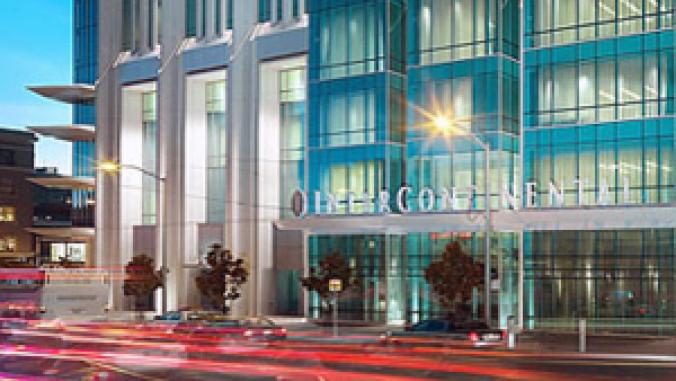Green Roofs Should Be Designed for Specific Goals: Report
Green roofs vary so much in design and performance that they should be constructed to achieve specific goals, says a study by The Lady Bird Johnson Wildflower Center at The University of Texas at Austin.

Green roofs vary so much in design and performance that they should be constructed to achieve specific goals, says a study by The Lady Bird Johnson Wildflower Center at The University of Texas at Austin.
The study, the first to compare green roofs, shows that the ability of such roofs to cool a building's interior and capture rainwater differs greatly, the center said.
"Just having a green roof may not mean anything in terms of preventing water from reaching the street level, for instance," said Mark Simmons, an ecologist at The Lady Bird Johnson Wildflower Center and the study's lead investigator.
"Green roofs have to be done right," Simmons said in a statement, "and our hope is to help manufacturers understand how to improve their designs."
Simmons and three study teammates published their findings July 25 on the website of the journal Urban Ecosystems.
The research involved the study of six different manufacturers' products and the ability of those green roofs to cool interior areas and capture rainwater. Simmons, colleagues at the Wildflower Center, which designed the first commercial green roof in Austin for a Starbuck's, and Brian Gardiner from Austech Roof Consultants Inc. conducted the project. They simulated green roof conditions by placing the manufacturers' roofs on metal insulated boxes and creating 24 experimental rooftops.
Their study, conducted during fall 2006 and spring 2007, suggested that a green roof could reduce a building's air conditioning bills by about 21 percent compared to traditional, tar-based black-top roofs, the center said.
The study also indicated that the green roofs' ability to capture rainwater was the factor that differed the most among the six manufacturers, said the center. The differences among the products, the intensity and amount of rain, and the vegetation used on green roofs factored into the performance.
The green roofs' abilities to cool interiors and retain rainwater were apparently improved by the use of plants native to the area, the center said. However, a green roof's ability to capture rainwater well did not guarantee that the roof would also have the best plant growth, the center said, citing variability among the products as the cause.
The bottom line, according to the researchers and the center, is that building owners in the market for green roofs "shouldn't assume these roofs are created equal."
"After you choose a manufacturer, tell them what kind of plants and what other features you want," Simmons said. "It's up to them to then tailor the green roof to your needs."
Simmons and his colleagues at the wildflower center continue to study data from the study including ongoing temperature comparisons, which are viewable at the wildflower center's webpage for native green roofs.
The study, the first to compare green roofs, shows that the ability of such roofs to cool a building's interior and capture rainwater differs greatly, the center said.
"Just having a green roof may not mean anything in terms of preventing water from reaching the street level, for instance," said Mark Simmons, an ecologist at The Lady Bird Johnson Wildflower Center and the study's lead investigator.
"Green roofs have to be done right," Simmons said in a statement, "and our hope is to help manufacturers understand how to improve their designs."
Simmons and three study teammates published their findings July 25 on the website of the journal Urban Ecosystems.
The research involved the study of six different manufacturers' products and the ability of those green roofs to cool interior areas and capture rainwater. Simmons, colleagues at the Wildflower Center, which designed the first commercial green roof in Austin for a Starbuck's, and Brian Gardiner from Austech Roof Consultants Inc. conducted the project. They simulated green roof conditions by placing the manufacturers' roofs on metal insulated boxes and creating 24 experimental rooftops.
Their study, conducted during fall 2006 and spring 2007, suggested that a green roof could reduce a building's air conditioning bills by about 21 percent compared to traditional, tar-based black-top roofs, the center said.
The study also indicated that the green roofs' ability to capture rainwater was the factor that differed the most among the six manufacturers, said the center. The differences among the products, the intensity and amount of rain, and the vegetation used on green roofs factored into the performance.
The green roofs' abilities to cool interiors and retain rainwater were apparently improved by the use of plants native to the area, the center said. However, a green roof's ability to capture rainwater well did not guarantee that the roof would also have the best plant growth, the center said, citing variability among the products as the cause.
The bottom line, according to the researchers and the center, is that building owners in the market for green roofs "shouldn't assume these roofs are created equal."
"After you choose a manufacturer, tell them what kind of plants and what other features you want," Simmons said. "It's up to them to then tailor the green roof to your needs."
Simmons and his colleagues at the wildflower center continue to study data from the study including ongoing temperature comparisons, which are viewable at the wildflower center's webpage for native green roofs.




